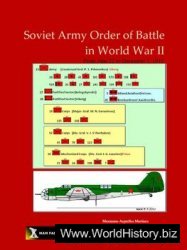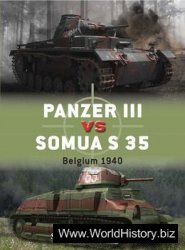Ground (glcm) and sea (slcm) variants; glcms are being dismantled under the inf Treaty. The Soviet Union is developing similar systems. Tomahawk can also be fitted with supplementary homing devices for use with a conventional warhead. EJG.
Cruiser. In the 1880s, the old categories of frigate and corvette were merged in the new type known as “cruiser”, or rather the word represented a range of types. There were the large “armoured cruisers”, more lightly armed and protected than contemporary battleships but usually faster. Small torpedo cruisers were slowly developed (principally by the Germans) into light cruisers for scouting duties. It was mostly the British, in need of large numbers of trade protection ships, who built an intermediate (second-class cruiser) type. There were also “colonial cruisers”, intended for imperial policing duties, which merged (and really belonged) with the sloops and gunboats. Size and fighting power varied.
The decade before World War I saw the armoured cruiser supplanted by the battlecruiser. Both Germans and British evolved sturdy classes of medium-sized cruisers named after towns and cities. By 1914 the latter, by way of the small but fast “scouts”, had evolved a new and fast type of “light cruiser” for leading destroyers and scouting in the North Sea. This grew in size to become the 6in armed light cruiser of the interwar years. The limitations set by the 1921 Washington Treaty caused the development of a new type of “heavy cruiser” armed with 8in guns. By 1939, nearly all cruisers could carry catapult float planes.
After 1945, the aircraft capability was removed, although finally to be replaced by helicopters. Cruisers were the first ships to carry anti-aircraft missiles, but also became the last ships to carry big guns (until the Americans revived their battleships). Now, those cruisers that are left are basically larger versions of frigates and guided missile destroyers. DJL.
“Cruiser” tanks. Family of fast, but thinly armoured British tanks.
Introduced from 1935. See also
TANKS.
Crutchley, Adm Sir Victor Alexander Charles (b. l893). Br. Awarded the vc in the blocking attempt on Ostend, 1918, he began World War II as Capt of the battleship Warspite; became Commodore of Devonport Barracks (1940); and in 1942 took command of the Australian squadron serving with the US Pacific Fleet. His force suffered severely in the Battle of Savo Island, August 1942.
Cuban Missile Crisis (1962). The world moved to the brink of nuclear war in October 1962 when US planes spotted bases under way in Cuba for 42 Soviet irbms. On October 22 as a “graduated response” alternative to an air strike, Kennedy announced a naval quarantine to block Soviet shipment of the missiles. While Soviet ships turned away, Kruschev on October 27 offered to remove the bases if the US pledged not to invade Cuba in the future. A call next day for removal of US missiles from Turkey was publicly ignored by the US but privately promised. On the 28th the crisis ended with both sides making concessions for peace - the no-invasion pledge in return for dismantling of the bases. See also KENNEDY, JOHN F.
Cumming, Sir Mansfield, Capt
(1859-1923). Br. First head of MI6, fostered mystique of clandestine leadership.
Cunningham, Lt Gen Sir Alan
(1887—1984). Br. c-in-c East Africa, November 1940; expelled the Italians from Italian Somaliland and Ethiopia in 1940-41; Commander Eighth Army, September 1941; relieved of his command due to ill health in November 1941 during Operation “Crusader”; subsequently became British High Commissioner and c-in-c in Palestine during the Jewish revolt, 1945-48.
Cunningham, Adm of the Fleet Viscount (1883-1963). Br. c-in-c, Mediterranean Fleet 1939-42 and again in 1943. Head of the Naval Delegation in Washington, 1942. Naval c-in-c. North African campaign, 1942. First Sea Lord, 194346. The victor of Taranto (1940) and Matapan (1941), Cunningham is generally regarded as Britain’s greatest naval commander in World War II. He was good at selecting subordinates and his offensive spirit and willingness to accept calculated risks enabled him to achieve remarkable successes in the Mediterranean against the Italian F'leet. German intervention and the arrival of powerful forces of dive-bombers exposed the shortcomings of surface sea power within range of shore-based air opposition. Cunningham sustained particularly heavy losses in the Greek and Crete campaigns when he was required to evacuate the British army twice in most adverse conditions. For a time thereafter the British were driven out of the Mediterranean. It may be that Cunningham, who had distinguished himself as a junior officer at the Dardanelles and Zeebrugge, too firmly believed that surface naval strength could avail despite the conditions introduced by air power in World War II. As First Sea Lord, Cunningham’s singleminded devotion to the navy did not make him an easy colleague for his fellow chiefs of staff. Nevertheless, he emerged from the war laden with honours. ANF.
Cunningham, Adm of the Fleet Sir John (1885-1962). Br. Commanded the British naval force intended to cover the landing of Free French troops in the abortive Dakar operation, September 1940, and then at the Admiralty as Fourth Sea Lord. In late 1942 he became c-in-c Levant, succeeding Adm A B Cunningham as c-in-c Mediterranean when the two commands were merged, October 1943. First Sea Lord (again succeeding A B Cunningham, to whom he was not related), 1946-48, during the Royal Navy’s postwar reduction.
Cunningham, Gp Capt John (“Cat’s Eyes”) (b. l917). Br. Outstanding and much-decorated raf night-fighter pilot. World War II. With his Ai operator. Sergeant C F Rawnsley, played important part in development of radar-assisted night interception. Subsequently a leading test pilot.




 World History
World History









